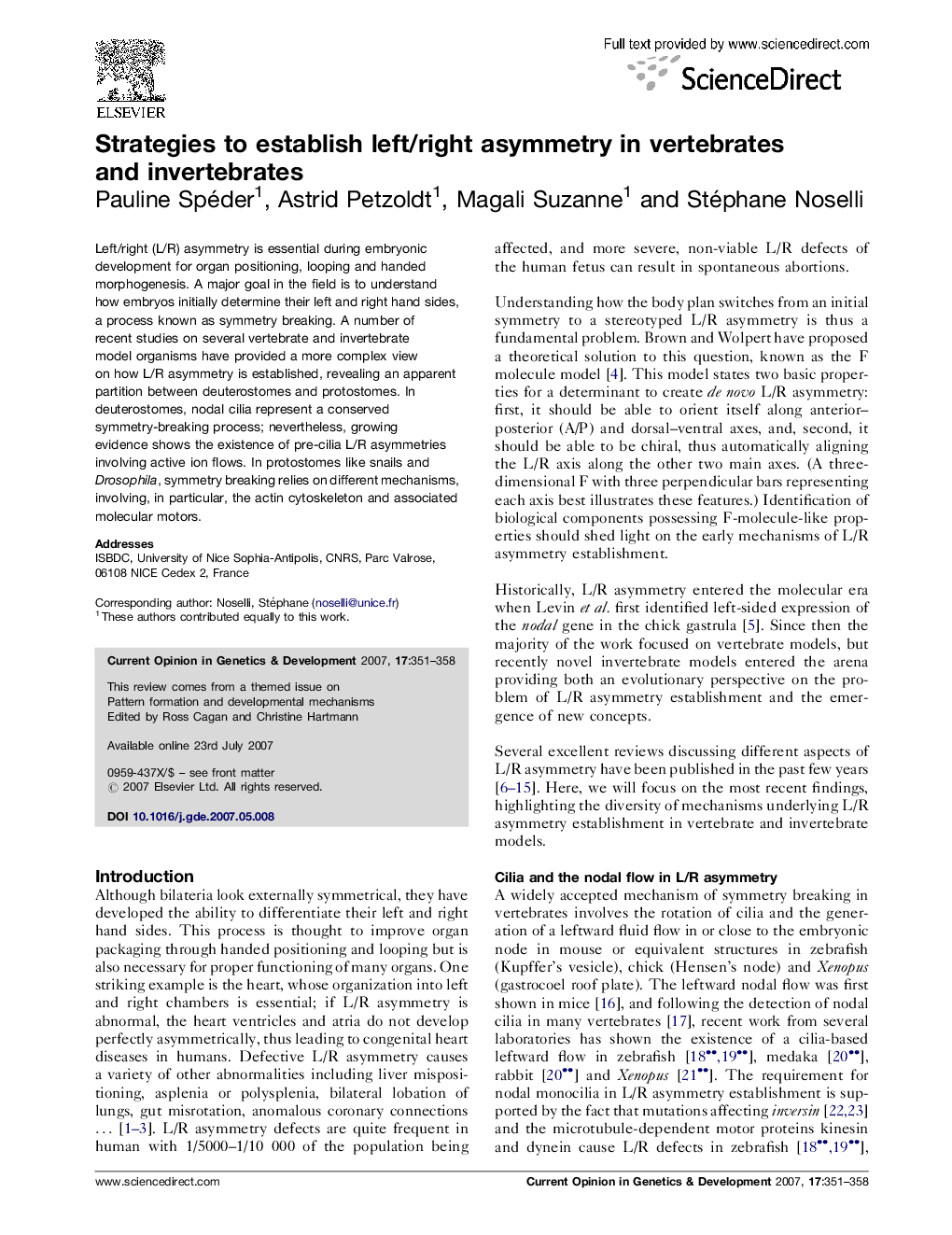| کد مقاله | کد نشریه | سال انتشار | مقاله انگلیسی | نسخه تمام متن |
|---|---|---|---|---|
| 2785421 | 1153949 | 2007 | 8 صفحه PDF | دانلود رایگان |

Left/right (L/R) asymmetry is essential during embryonic development for organ positioning, looping and handed morphogenesis. A major goal in the field is to understand how embryos initially determine their left and right hand sides, a process known as symmetry breaking. A number of recent studies on several vertebrate and invertebrate model organisms have provided a more complex view on how L/R asymmetry is established, revealing an apparent partition between deuterostomes and protostomes. In deuterostomes, nodal cilia represent a conserved symmetry-breaking process; nevertheless, growing evidence shows the existence of pre-cilia L/R asymmetries involving active ion flows. In protostomes like snails and Drosophila, symmetry breaking relies on different mechanisms, involving, in particular, the actin cytoskeleton and associated molecular motors.
Journal: Current Opinion in Genetics & Development - Volume 17, Issue 4, August 2007, Pages 351–358